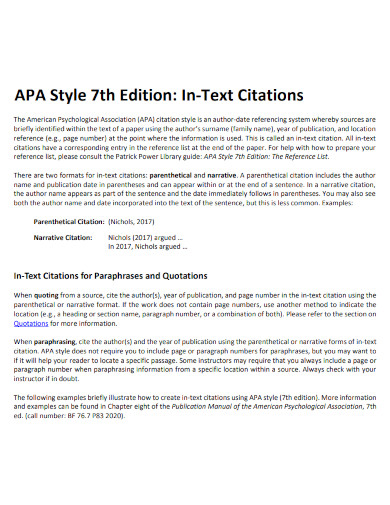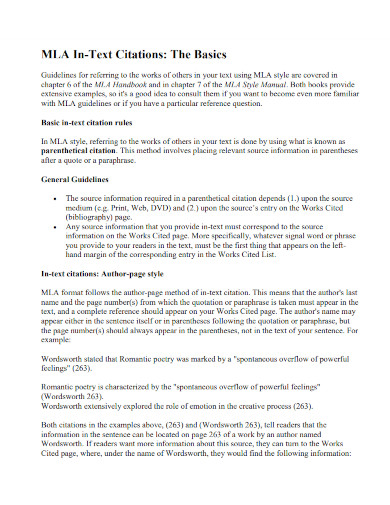24+ In-Text Citation Examples to Download
In the realm of academic writing, citations are the backbone of credibility and integrity. By incorporating in-text citations effectively, you not only provide proper attribution but also strengthen your arguments with evidence from authoritative sources. In this article, we will explore the art of writing in-text citations, step-by-step, to enhance your research paper’s quality and ensure adherence to scholarly standards. We will also address FAQs related to citation styles, punctuation, and the function of in-text citations, empowering you to master this essential aspect of academic writing sample.
1. APA 7th Edition In-Text Citation
2. MLA In Text Citations
3. In Text Citations Quote
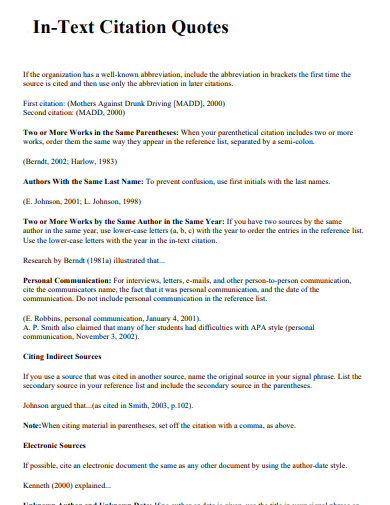
sites.augsburg.edu
4. In Text Citations Bibliography
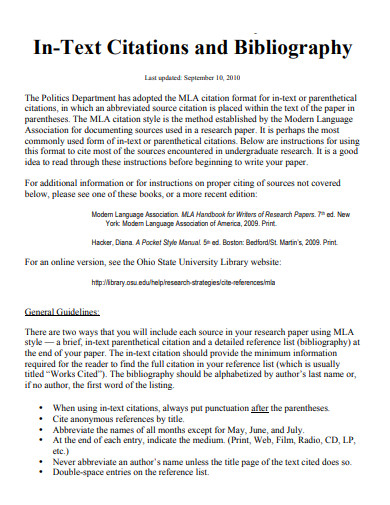
politics.ucsc.edu
5. In Text Citations Website
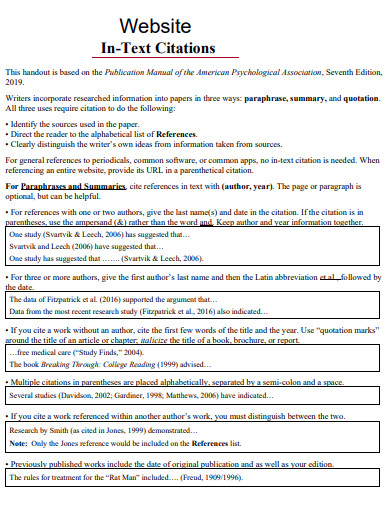
svsu.edu
6. In Text Citation Book
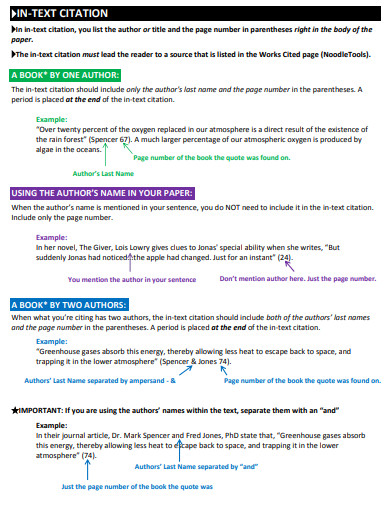
cbsd.org
7. In Text Citation Essay
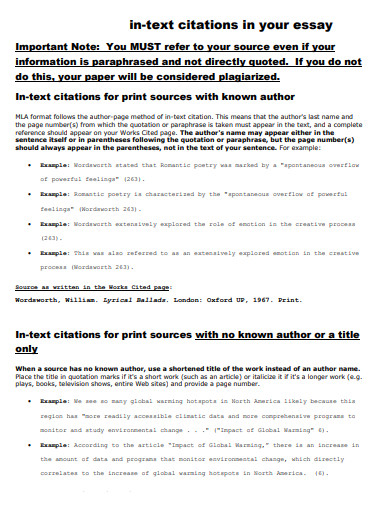
cusd80.com
8. In Text Citation Research Paper
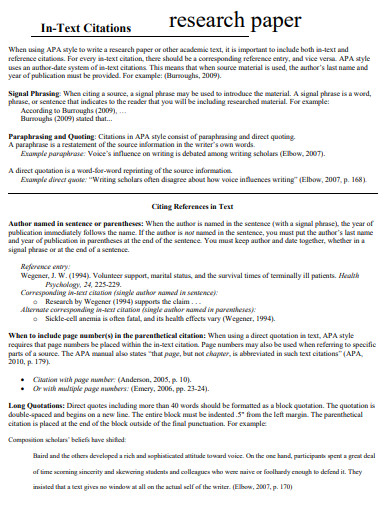
tamucc.edu
9. In Text Citation Article
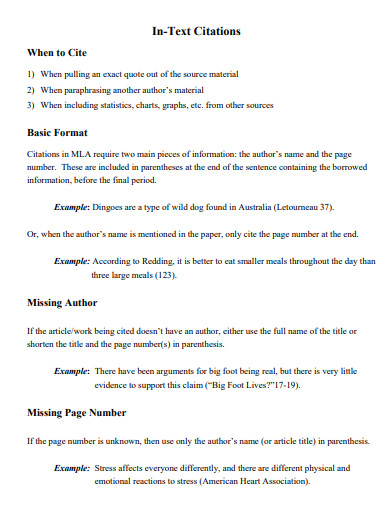
publicwebuploads.uwec.edu
10. In Text Citation Format
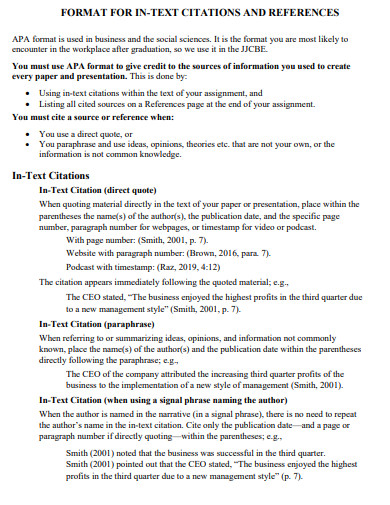
montana.edu
11. Chicago Style In Text Citation
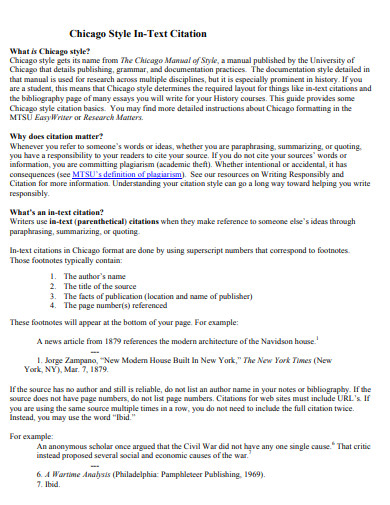
mtsu.edu
12. In Text Citation Parenthetical
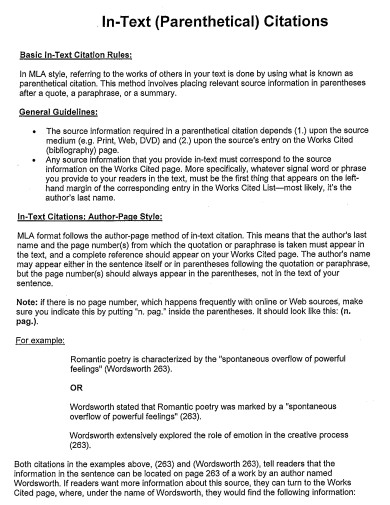
valenciacollege.edu
13. In Text Citation Author
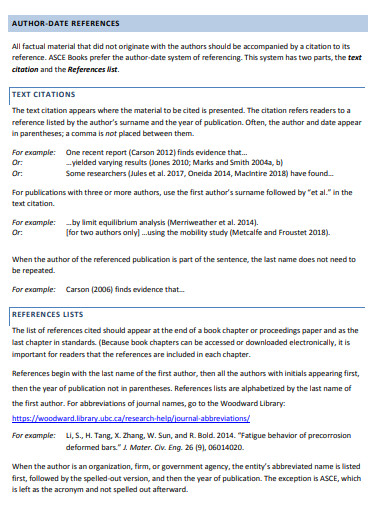
ascelibrary.org
14. In Text Citation 7th Edition
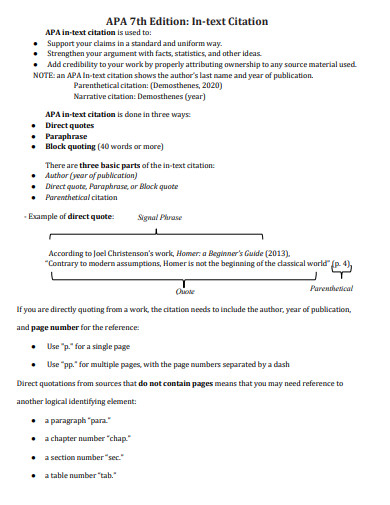
alamo.edu
15. In Text Citation Direct Quote
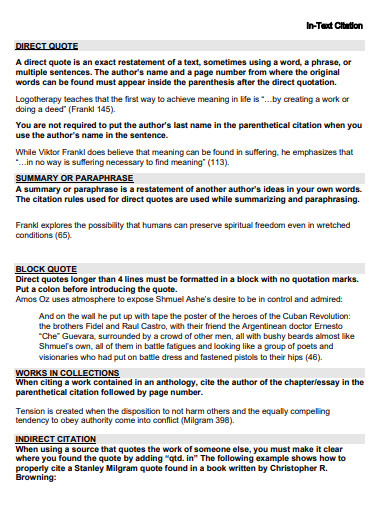
bmccprodstroac.blob.core.windows.net
16. In Text Citation Reference
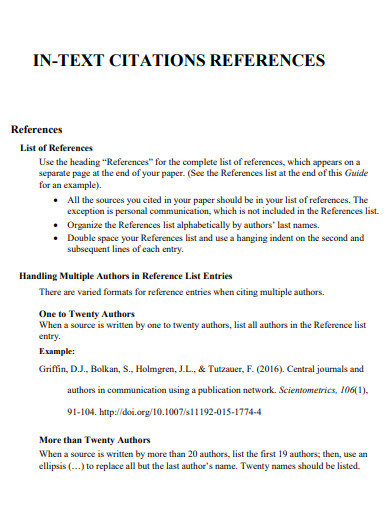
montana.edu
17. In Text Citation Journal Article
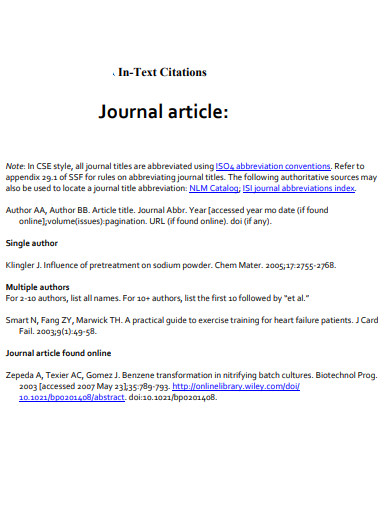
biblio.csusm.edu
18. In Text Citation Poem
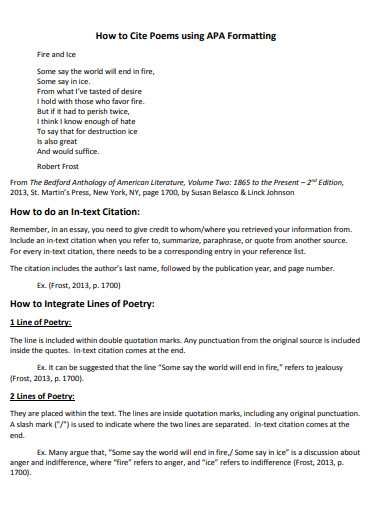
ksslibrary.org
19. In Text Citation Works Cited
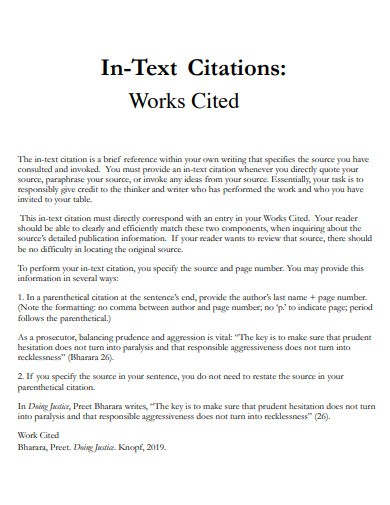
villanova.edu
20. In Text Citation Paragraph
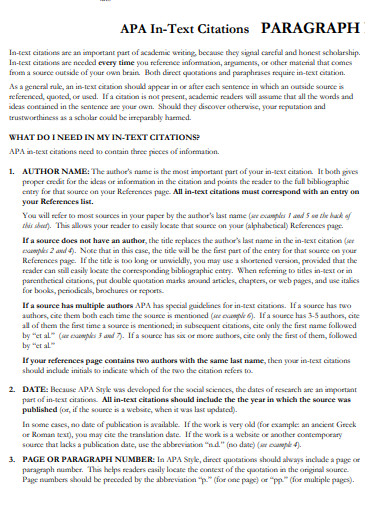
crk.umn.edu
21. In Text Citation Vancouver Style
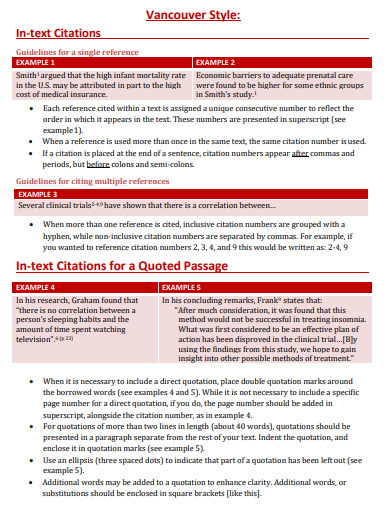
ucalgary.ca
22. In Text Citation Narrative
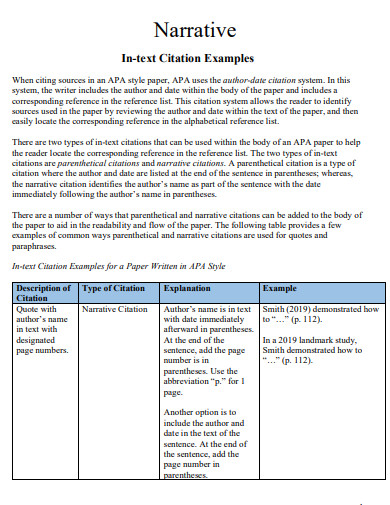
resources.css.edu
23. In Text Citation Checklist
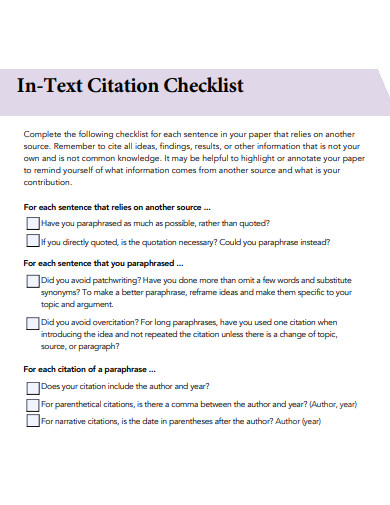
apastyle.apa.org
24. In Text Citation Template
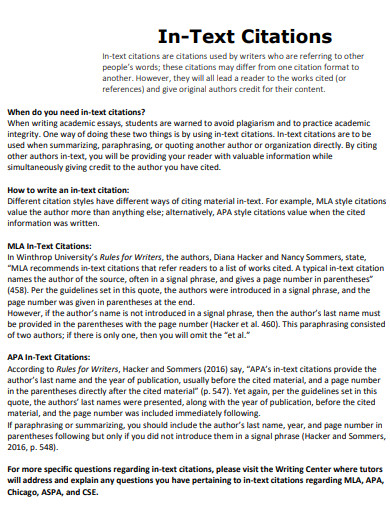
winthrop.edu
25. General In Text Citation
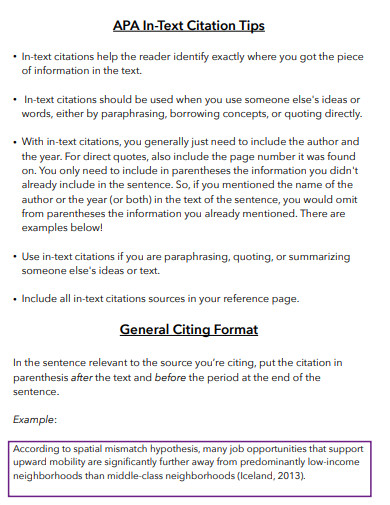
socialwork.uw.edu
What is In-Text Citation?
In-text citations serve as brief references within the body of your research paper, providing key details to direct readers to the full source information in the reference list or bibliography. By incorporating in-text citations, you establish a clear connection between your ideas and the works that have contributed to your arguments, thereby avoiding plagiarism. These citations typically consist of the author’s last name and the publication year, enabling readers to locate the complete reference easily.
How to Write an In-Text Citation
Crafting a precise and properly formatted in-text citation requires attention to detail and adherence to established guidelines. By following these steps, you can ensure accuracy and seamlessly integrate your sources into your research paper:
Step 1: Identify the Source Type
Begin by identifying the type of source you are referencing—whether it is a book, journal article, website, or any other format. Each source type has specific formatting requirements that must be followed.
Step 2: Gather Essential Information
Locate the necessary information from the source, such as the author’s name(s), publication year, and relevant page numbers if applicable. Accurate recording of these details is crucial for constructing precise citations.
Step 3: Select an Appropriate Signal Phrase
To introduce the author’s name smoothly into your sentence, choose an appropriate signal phrase. Alternatively, use a parenthetical citation when necessary.
Step 4: Place the Citation
Include the author’s last name and the publication year either within parentheses at the end of the relevant sentence or within the sentence itself, based on the chosen citation style. Ensure consistency throughout your paper.
Step 5: Include Page Numbers
If you are directly quoting or paraphrasing a specific passage, include the corresponding page numbers to direct readers to the exact location of the information.
FAQs
Which citation style should I use for my research paper?
The choice of citation style depends on the requirements of your academic institution or the specific guidelines of the journal you are targeting. The APA style is commonly used in social sciences and education-related research papers due to its well-established conventions.
Why is punctuation important in in-text citations?
Punctuation is crucial in in-text citations as it helps separate different elements and ensures clarity. Proper placement of commas, parentheses, and periods maintains the accuracy and integrity of your citations.
What is the function of in-text citations in scholarly writing?
In-text citations serve multiple functions, including giving credit to the original authors, establishing your credibility as a researcher, providing evidence for your arguments, and allowing readers to locate the full source information in the reference list or bibliography.
Mastering the art of writing in-text citations is an essential skill for any academic writer. Accurate and consistent referencing not only strengthens your research paper’s credibility but also contributes to the ongoing scholarly conversation. By following the step-by-step guide outlined in this article, understanding citation styles, and paying attention to punctuation, you can elevate the quality of your work and showcase your commitment to scholarly integrity. So, embrace the power of in-text citations and enhance the impact of your research.



